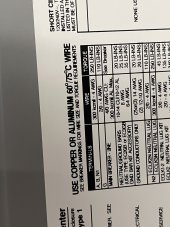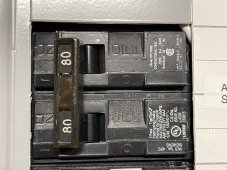the breaker that feeds my off grid main panel from the 2 inverters is 60a and has tripped a few times and feels warm/hot to touch
my system is dual MPP LV6548 inverters with 6 eg4 batts
on these hot days I was trying to run 2 mini splits that use 240v and was pulling up to 6000w total to the house
the breaker panel in question is in my workshop with the batts and inverters. the breaker in the panel is a siemens 60a
in the house is a 100a panel with 100a breaker
wires between workshop and house are #4 AL
I will be replacing the 60a breaker in case it is faulty and overheating, wondering if its possible to safely replace with a slightly larger breaker ?
with both mini splits running I think I was pulling maybe 55 amps when breaker trips
my system is dual MPP LV6548 inverters with 6 eg4 batts
on these hot days I was trying to run 2 mini splits that use 240v and was pulling up to 6000w total to the house
the breaker panel in question is in my workshop with the batts and inverters. the breaker in the panel is a siemens 60a
in the house is a 100a panel with 100a breaker
wires between workshop and house are #4 AL
I will be replacing the 60a breaker in case it is faulty and overheating, wondering if its possible to safely replace with a slightly larger breaker ?
with both mini splits running I think I was pulling maybe 55 amps when breaker trips




